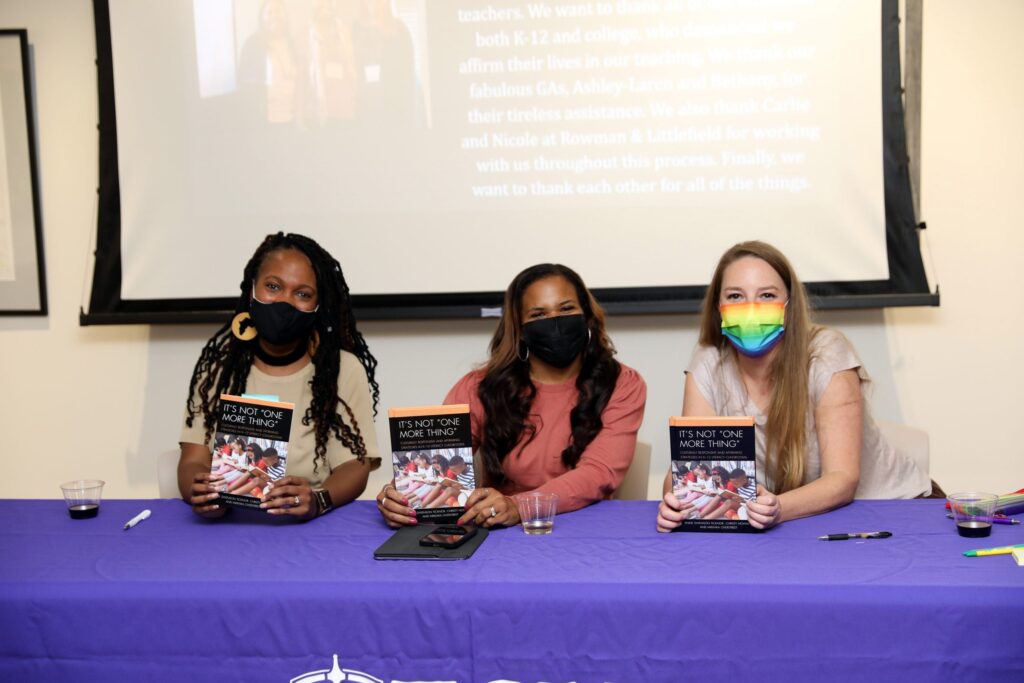January 31, 2022
LEHE faculty publish work on culturally responsive pedagogy and representations of teacher gender

Drs. Mikkaka Overstreet, Christy Howard, and Anne Ticknor (from left) at a book signing for their book “It’s Not ‘One More Thing’: Culturally Responsive and Affirming Strategies in K-12 Literacy Classrooms.”
Faculty in the Department of Literacy Studies, English Education, and History Education recently published articles in their field.
Drs. Mikkaka Overstreet, Christy Howard, and Anne Ticknor wrote an article in the January/February/March 2022 edition of Literacy Today titled “Teaching Through A New Lens.”
The introduction to their article reads:
In 2019, we began writing a book: It’s Not “One More Thing”: Culturally Responsive and Affirming Strategies in K-12 Literacy Classrooms (Rowman & Littlefield). We knew that educators were interested in learning more of the how-tos in implementing culturally responsive pedagogy (CRP) and we wanted to provide a practical resource. When we finished our book in the fall of 2020, life was drastically different. The world was in a pandemic, nations were crying out for justice for Black and Brown people, and teachers had to relearn how to teach while in remote spaces.
The year 2021 was just as challenging. Teachers’ collective plates were — and remain — fuller than ever. Having been K-12 teachers ourselves, we get it. We know instructional time is precious, expectations are high and support is often low, teachers spend long hours working, and it is sometimes easier to stick to scripted programs and familiar lessons. We as teachers can hold space for all of that to be true and still acknowledge that we have to do better. We have to improve instruction and make classrooms more equitable spaces for all learners. We have to invest time in CBP.
Dr. Anne Ticknor wrote an article for Gender and Education with her colleague in the School of Social Work, Dr. Paige Averett, titled “Drawing teachers: examining teacher gender in drawings by pre-service educators.”
The abstract reads:
This article examines representations of gender in teacher drawings by pre-service elementary educators enrolled in a literacy methods course in the southeast United States. A total of 55 pre-service teachers completed 110 drawings with brief narratives or 55 sets. Drawings were analyzed via visual discourse analysis and narratives were analyzed with the constant comparative method. Sets were examined specifically for D/discourses of gender. Three gender-related findings emerged including, the vast majority of drawings included representations of femininized teachers, gender minority as well as gender majority students did not necessarily identify as a teacher in the drawing, and teacher identities were negotiated between drawings. Implications include the need for teacher education programs that incorporate spaces for pre-service teachers to negotiate gender and conceptualizations of teachers in both course work and field experiences.
